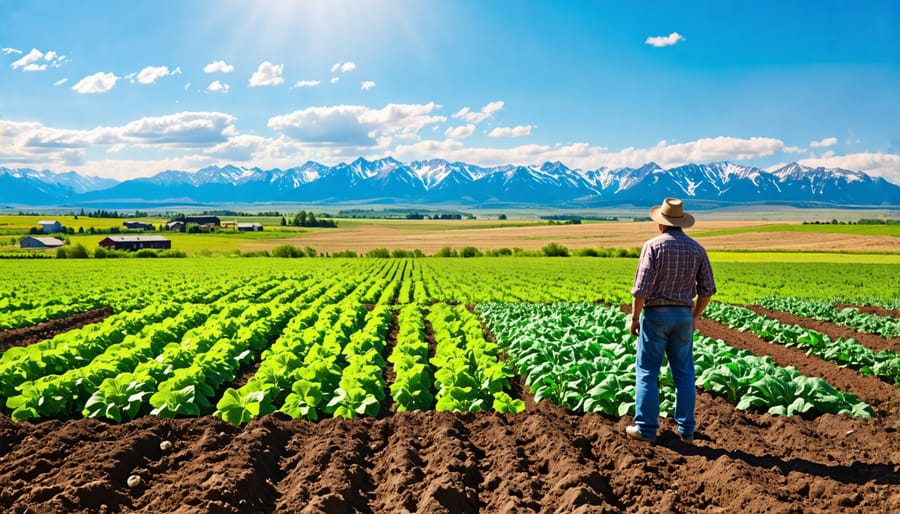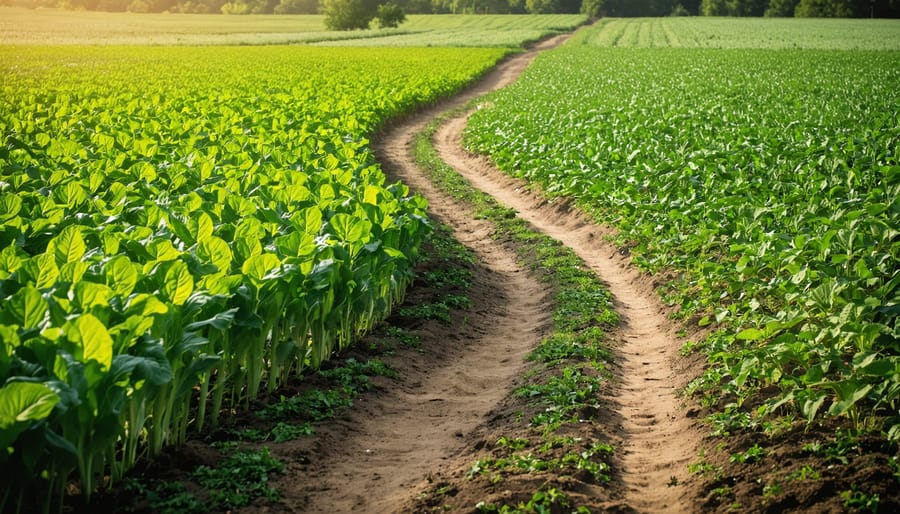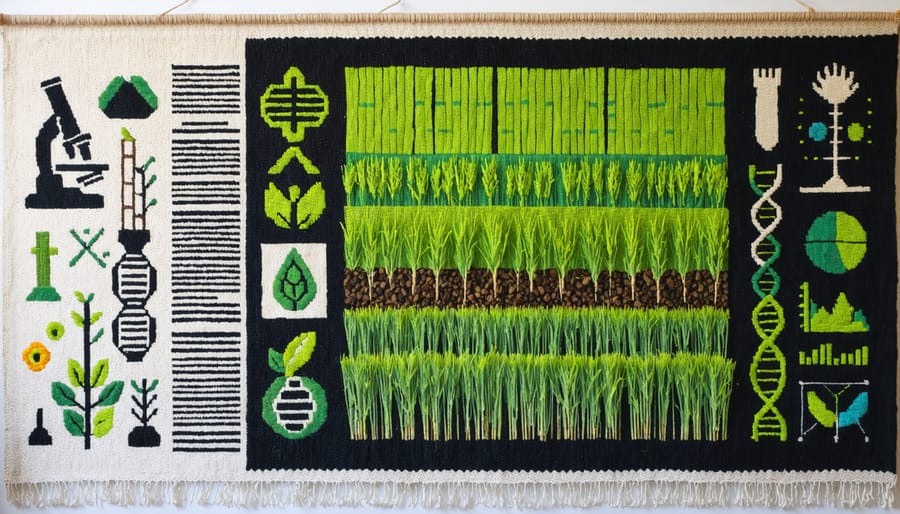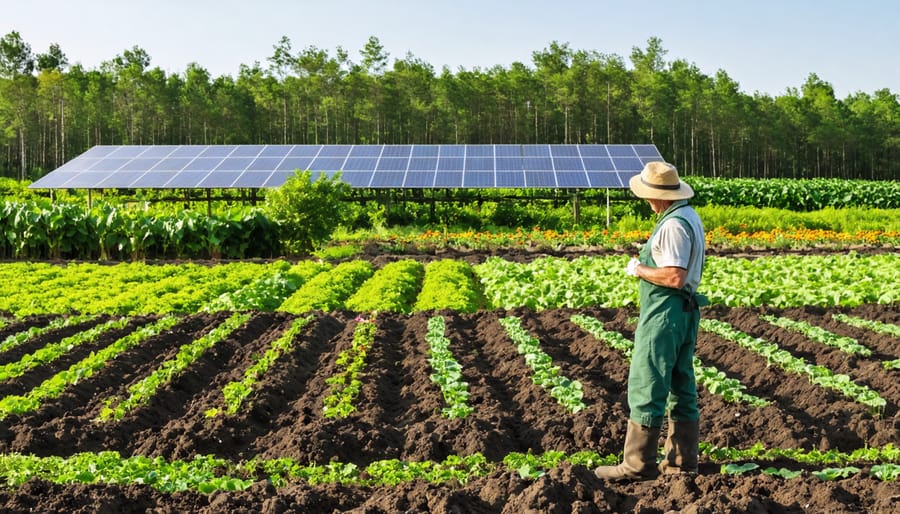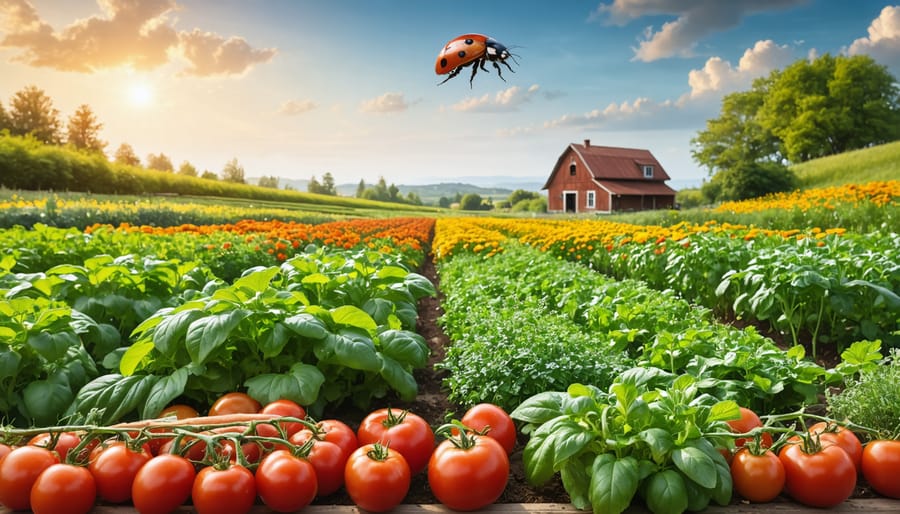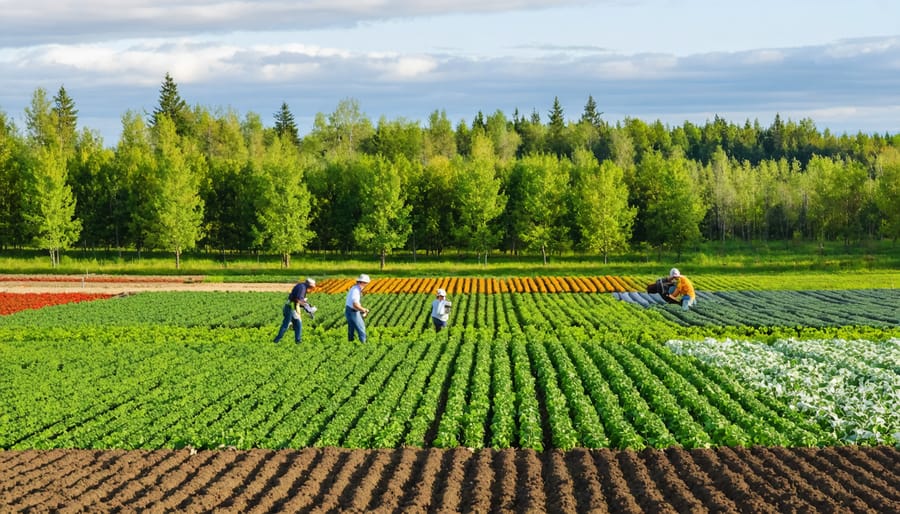Embrace the journey toward a more sustainable and regenerative farming system through organic transition. By adopting organic practices, farmers can improve soil health, enhance biodiversity, reduce environmental impact, and tap into growing consumer demand for organic products. While the transition process requires careful planning and dedication, the long-term benefits for both the land and the farming community are immeasurable. This article serves as a comprehensive guide, providing actionable steps, expert insights, and inspiring success stories to support Alberta farmers in their pursuit of organic certification. Together, we can cultivate a thriving, resilient agricultural landscape that nourishes our communities and preserves our natural resources for generations to come.
Understanding Organic Transition
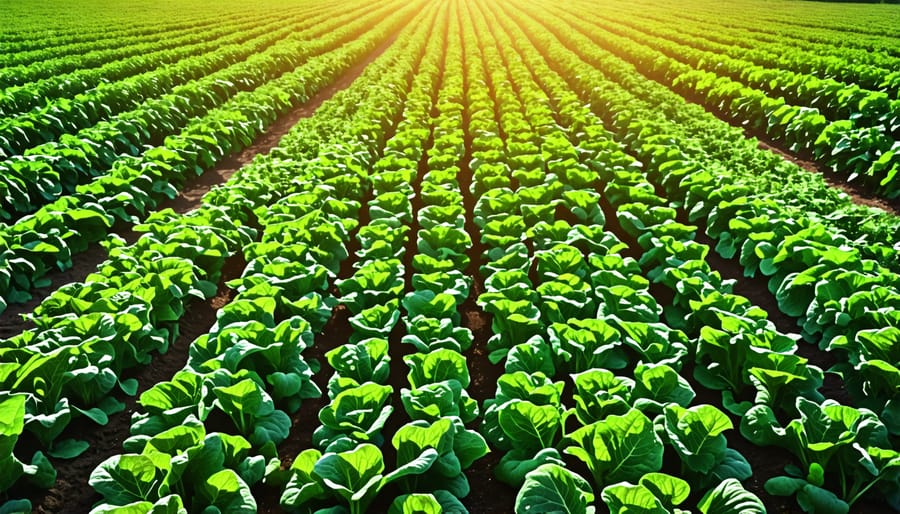
What is Organic Transition?
Organic transition is the process of converting conventional agricultural land and practices to organic farming methods that prioritize ecological balance, biodiversity, and natural resource conservation. The primary goal of organic transition is to establish a sustainable and regenerative farming system that produces healthy, nutrient-dense food while minimizing the use of synthetic inputs and reducing the environmental impact of agriculture. This process typically involves a three-year transition period, during which farmers must adhere to strict organic standards and regulations, such as eliminating the use of synthetic pesticides, herbicides, and fertilizers, and implementing soil-building practices like crop rotation and cover cropping. By transitioning to organic farming, Canadian farmers can contribute to a more resilient and environmentally friendly agricultural system that benefits both the land and the communities they serve.
Key Principles and Practices
To successfully transition to organic farming, Canadian farmers should embrace key principles such as maintaining soil health, fostering biodiversity, and using natural pest management techniques. Building healthy soil is the foundation of organic agriculture. Practices like crop rotation, cover cropping, and adding organic matter through compost or green manure help improve soil structure, fertility, and water retention.
Encouraging biodiversity is another crucial aspect. Planting a variety of crops, incorporating beneficial insects, and creating wildlife habitats promote a balanced ecosystem that naturally suppresses pests and diseases. Farmers should also prioritize preventive measures and rely on organic-approved inputs for pest and disease management.
Effective weed control is essential and can be achieved through mulching, mechanical cultivation, and flame weeding. Organic farmers must also adhere to strict guidelines regarding the use of synthetic fertilizers, pesticides, and genetically modified organisms (GMOs).
Recordkeeping is vital for organic certification. Farmers must document their practices, inputs, and crop yields to demonstrate compliance with organic standards. Joining local organic farming associations, attending workshops, and seeking advice from experienced organic farmers can provide invaluable support during the transition process.
By adopting these principles and practices, Alberta farmers can successfully navigate the challenges of organic transition and contribute to a more sustainable agricultural future for Canada.
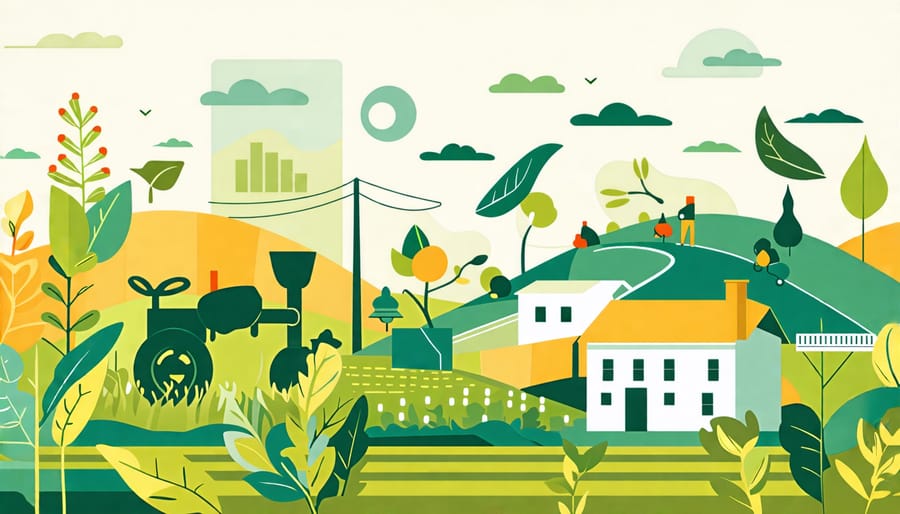
Benefits of Organic Transition
Environmental Benefits
Organic transition offers numerous environmental benefits that contribute to a more sustainable and resilient agricultural system. By eliminating synthetic pesticides and fertilizers, organic farming practices improves soil health, enhancing its structure, fertility, and ability to retain water and nutrients. This leads to reduced soil erosion and increased resilience to droughts and floods. Additionally, organic farming promotes biodiversity by creating habitats for beneficial insects, pollinators, and wildlife. Diverse ecosystems are more stable and better equipped to handle pests and diseases naturally. Furthermore, organic practices help mitigate climate change by reducing greenhouse gas emissions associated with synthetic inputs and increasing the soil’s capacity to sequester carbon. By adopting organic farming methods, Canadian farmers can play a crucial role in preserving our environment for future generations while producing healthy, sustainable food for their communities.
Economic Benefits
Transitioning to organic farming can lead to significant economic benefits for Canadian farmers. While the initial costs of transitioning may be higher, organic products often command premium prices in the market, allowing farmers to recoup their investments and increase profitability. According to a recent study, organic farmers in Alberta reported receiving prices up to 30% higher than conventional farmers for the same products. Additionally, organic farming practices can reduce input costs over time by minimizing the need for synthetic fertilizers and pesticides. As soil health improves and natural pest control methods are implemented, farmers can save money on these expenses. Furthermore, organic farming promotes long-term profitability by prioritizing sustainable land management and biodiversity conservation. By investing in the health of their land, farmers can ensure the viability of their operations for generations to come. Successful organic farmers in Canada have demonstrated that with proper planning and execution, the economic benefits of organic transition can be substantial.
Social Benefits
The transition to organic farming offers significant social benefits that extend beyond the farm gate. By supporting local, sustainable agriculture, organic practices help revitalize rural communities and create a more resilient food system. Organic farms often prioritize direct sales and community engagement, strengthening connections between farmers and consumers. This fosters a greater appreciation for the value of healthy, locally-grown food. Moreover, organic farming methods that prioritize soil health and biodiversity can boost both your crops and our planet, leading to improved food security and nutrition for all. By reducing exposure to synthetic pesticides and fertilizers, organic produce also contributes to better consumer health outcomes.
Steps to Successful Organic Transition
Assess Your Farm
Before transitioning to organic farming, assess your current practices and resources. Evaluate your farm’s soil health, water management, and pest control methods. Identify areas where you can implement organic techniques, such as crop rotation, cover cropping, and integrated pest management. Consider your goals for going organic, whether it’s environmental stewardship, premium prices, or personal values.
Take inventory of your equipment and infrastructure to determine if they align with organic standards. Assess your financial resources and create a budget for the transition period, which may involve additional costs and potential yield reductions. Seek advice from experienced organic farmers, agricultural extension services, or organic certification bodies to gain insights and support during your assessment phase. By thoroughly evaluating your farm’s readiness for organic transition, you can develop a realistic plan and timeline for making the switch to sustainable agriculture practices.

Develop a Transition Plan
Developing a comprehensive transition plan is crucial for a successful shift to organic farming. Start by setting clear goals and objectives, such as target organic acreage, desired certifications, and projected timelines. Break down the transition process into manageable phases, typically over a 36-month period, as required by Canadian organic standards.
Create a detailed budget that accounts for additional costs associated with organic inputs, labor, and potential yield reductions during the transition. Identify key milestones, such as completing soil tests, implementing crop rotations, and establishing organic pest management strategies. Regularly monitor progress and adjust your plan as needed.
Consider seeking guidance from experienced organic farmers, agricultural extension services, or organizations like the Organic Alberta. They can provide valuable insights and help you navigate the challenges of transitioning to organic production.
Remember to plan for the certification process itself, which involves thorough recordkeeping, inspections, and adherence to organic standards. By creating a robust transition plan, you’ll be better equipped to manage risks, allocate resources effectively, and achieve your goal of becoming a certified organic farm in Alberta.
Implement Organic Practices
To successfully implement organic practices, start by adopting crop rotation, which involves alternating the types of crops grown in each field annually. This helps maintain soil health, reduce pest and disease pressure, and improve nutrient cycling. Incorporate cover crops into your rotation to suppress weeds, fix nitrogen, and enhance soil structure.
Composting is another essential practice in organic farming. Create compost piles using a mix of green materials (like fresh plant clippings) and brown materials (such as dried leaves). This process recycles nutrients back into the soil, improving fertility and microbial activity. Apply finished compost to your fields to boost soil health and crop productivity.
Managing pests and diseases organically requires a proactive approach. Encourage beneficial insects by planting native flowering plants around your fields. These insects help control harmful pests naturally. Utilize natural pest control methods like insecticidal soaps, neem oil, or introducing predatory insects. Monitor your crops closely to catch any issues early and intervene promptly.
Implement conservation tillage practices to minimize soil disturbance and erosion. This includes techniques like no-till or strip-till farming, which help preserve soil structure and organic matter. Mulching with organic materials like straw or wood chips can suppress weeds and retain soil moisture.
Lastly, engage with your local organic farming community to share knowledge, resources, and experiences. Attend workshops, field days, and conferences to learn from seasoned organic farmers and experts. By collaborating and learning from one another, Canadian farmers can successfully transition to organic practices and contribute to a more sustainable agricultural future.
Overcoming Challenges
Managing Weeds and Pests
To manage weeds and pests without synthetic chemicals, consider implementing cultural practices like crop rotation, cover cropping, and mulching. These methods can suppress weed growth and disrupt pest cycles. Mechanical controls, such as hand weeding or shallow cultivation, are also effective. Biological control agents, including beneficial insects like ladybugs and parasitic wasps, can help keep pest populations in check. Organic pesticides derived from natural sources, such as neem oil or pyrethrin, can be used as a last resort. Consult with local organic farming organizations or extension services for region-specific strategies tailored to your crops and climate.
Navigating Certification
Navigating the organic certification process is a crucial step in transitioning to organic farming. In Canada, the Canadian Food Inspection Agency (CFIA) oversees the organic certification system. To become certified, farmers must follow a set of standards that cover all aspects of production, from soil management to animal welfare. The process typically involves submitting an application, undergoing inspections, and maintaining detailed records. Working with a reputable certifying body can help guide farmers through the requirements and ensure compliance. While the certification process may seem daunting, support is available through local organic associations and experienced organic farmers who can share their knowledge and experiences.
Resources and Support
For farmers embarking on the organic transition journey, there are numerous resources and support networks available to guide you through the process. The Organic Agriculture Centre of Canada (OACC) offers a wealth of helpful resources, including fact sheets, research reports, and webinars covering various aspects of organic farming. Organizations like the Canada Organic Trade Association (COTA) and the Canadian Organic Growers (COG) provide invaluable support and networking opportunities for transitioning farmers. They host events, workshops, and conferences where you can connect with experienced organic producers, learn from their successes and challenges, and gain practical insights. Provincial agricultural ministries and local organic associations also offer region-specific resources, funding opportunities, and mentorship programs to support farmers during the transition period. Remember, you are not alone in this journey – reach out to these organizations and tap into the collective knowledge of the organic farming community to ensure a successful transition.
Conclusion
The transition to organic farming is a journey that requires dedication, knowledge, and support. By embracing sustainable practices, Canadian farmers can contribute to a healthier environment, stronger communities, and a more resilient agricultural sector. The benefits of organic farming extend beyond individual farms, positively impacting soil health, biodiversity, and consumer trust in the food system.
As you embark on this transformative path, remember that you are not alone. Numerous resources, from government programs to local organic farming networks, are available to guide and support you throughout the process. By collaborating with fellow farmers, sharing experiences, and learning from experts, you can overcome challenges and achieve your goals.
The future of agriculture lies in the hands of those who are willing to adapt and innovate. By choosing to transition to organic farming, you are taking a proactive step towards a more sustainable and resilient future for generations to come. Together, we can build a thriving organic farming community in Alberta and across Canada.

